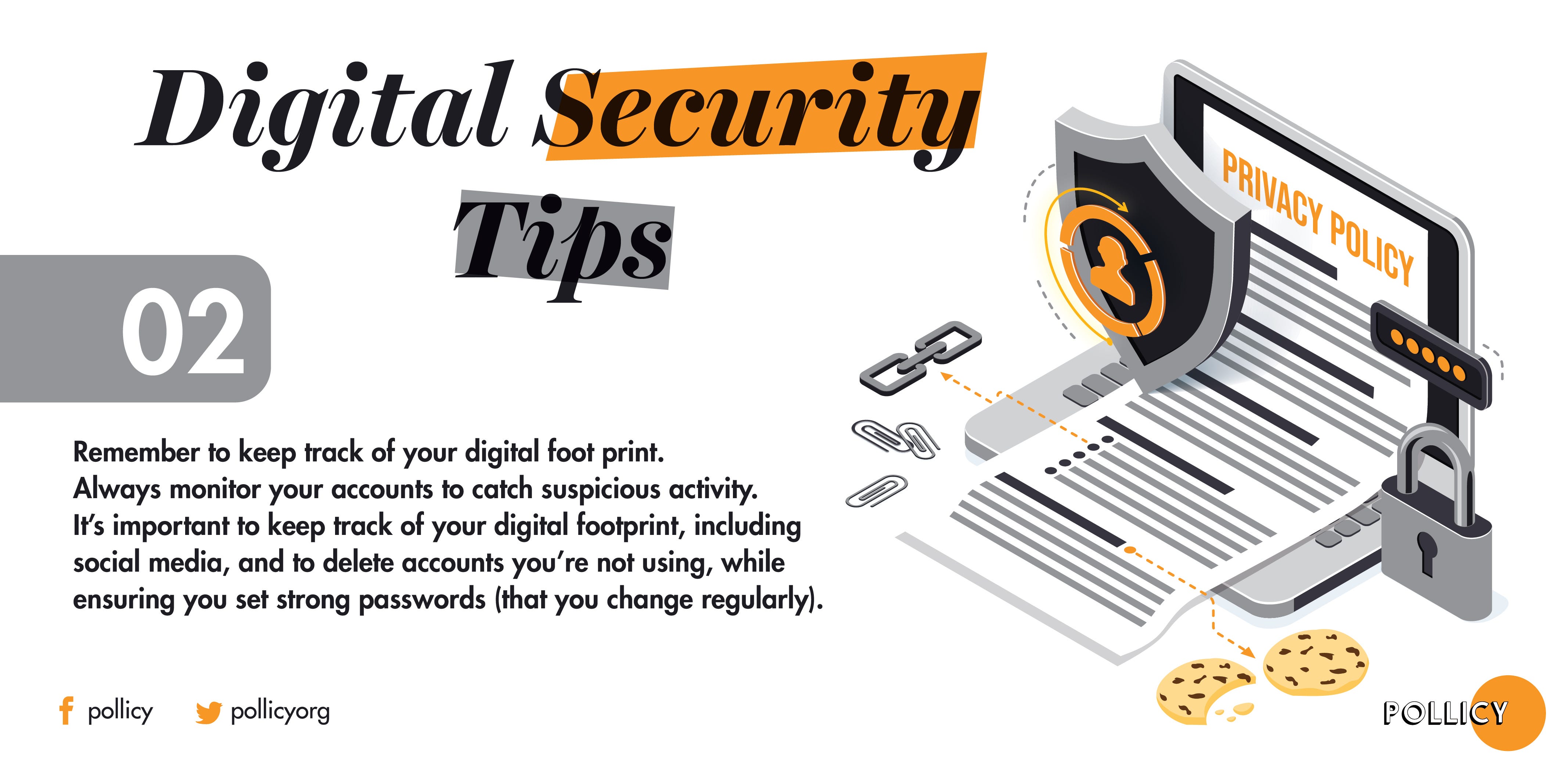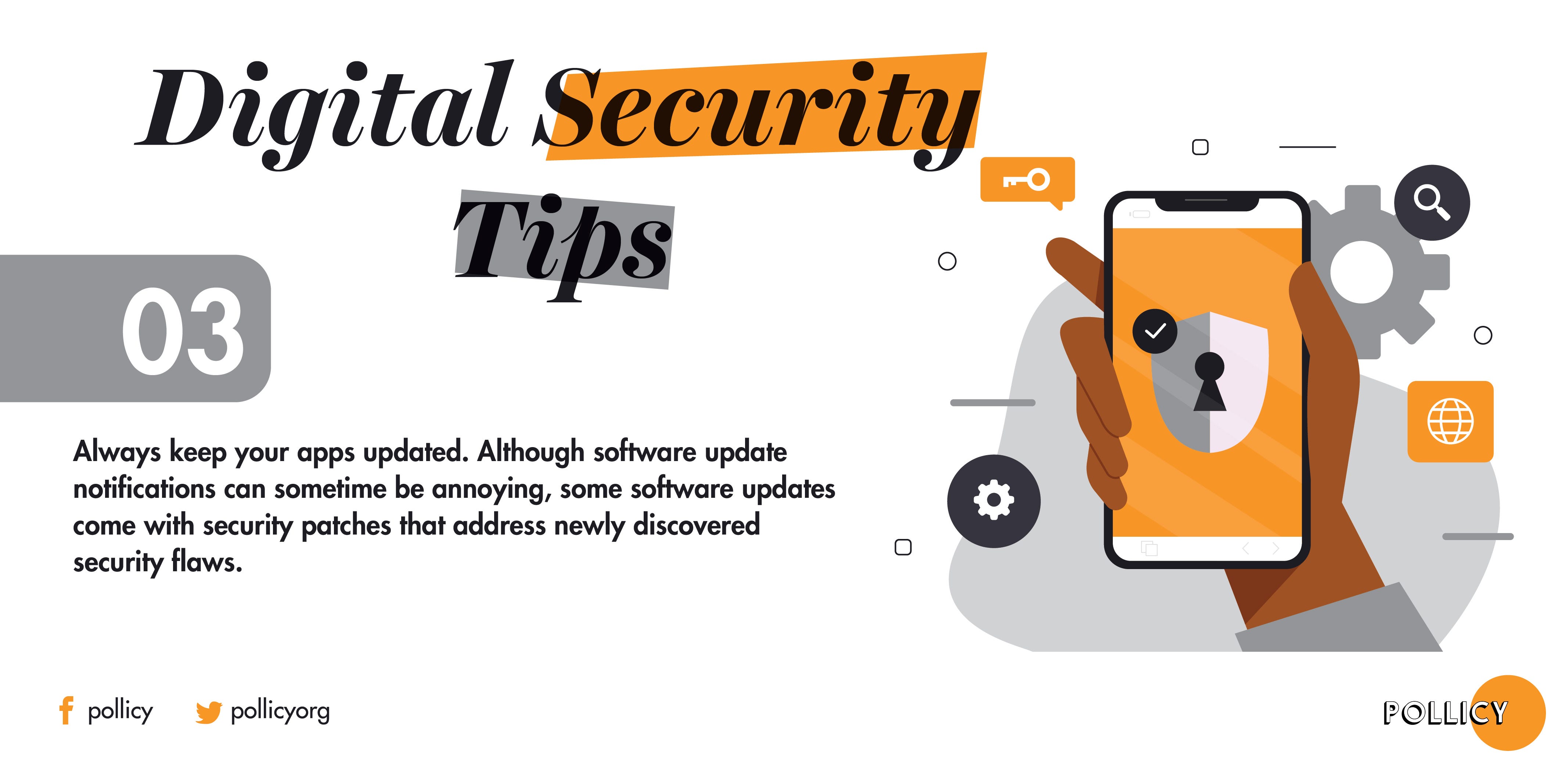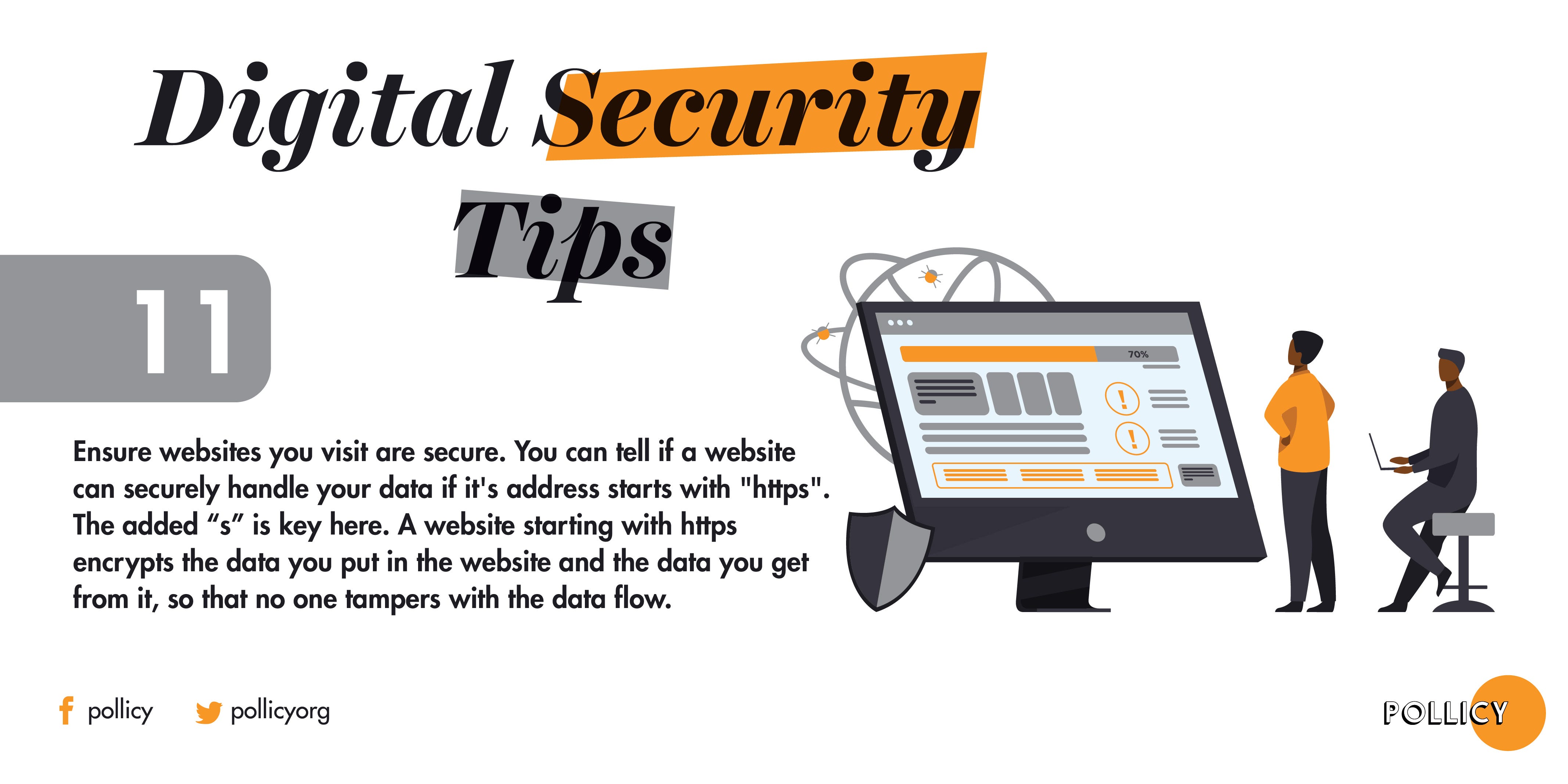Every year since 2003, the month of October has been recognized as National Cyber Security Awareness Month (NCSAM). This effort was brought to life through a collaboration between the U.S. Department of Homeland Security and the National Cyber Security Alliance.
This year marked the 17th anniversary of the National Cybersecurity Awareness Month (NCSAM) and Pollicy joined alongside other organisations like Encrypt Uganda, ISOC Uganda, Digital Literacy Initiative, Makerere University, and others. The theme for this year was “Do Your Part. #BeCyberSmart.” as a means to encourage individuals and organizations to own their role in protecting their part of cyberspace, stressing personal accountability and the importance of taking proactive steps to enhance cybersecurity.
Here’s is our collection of tips shared;
1. Avoid opening unknown links. Just because a link was sent to you doesn’t mean you should always click it. Always inspect the link by hovering over it to get a glimpse of the site it’s leading you to

2. Remember to keep track of your digital footprint. Always monitor your accounts to catch suspicious activity. It’s important to keep track of your digital footprint, including social media, and to delete accounts you’re not using while ensuring you set strong passwords (that you change regularly).

3. Always keep your apps updated. Although software update notifications can sometimes be annoying, some software updates come with security patches that address newly discovered security flaws.

4. Use two-factor authentication. One strong password alone never gets you all the security you need. For digital safety, consider adding a layer of security so that even hackers guess your password, there’s an additional security layer they still need to crack.

5. It’s better to be safe than sorry. The most harmful thought you can have is “it won’t happen to me,” or “I don’t visit unsafe websites.” Cybercriminals don’t discriminate in targeting all sorts of users.

6. Try as much as possible to avoid public networks. It might be tempting to connect to an unsecured connection but the consequences aren’t worth it. Only connect to private networks — especially when handling sensitive information.

7. Use a password manager. These can help you create and remember passwords. Password managers are the safest way to keep track of your passwords, as they allow you to use stronger passwords without needing to memorize anything.

8. Use a VPN when using Public Wi-Fi. By using a VPN, the traffic between your device and the VPN server is encrypted. This means it’s much more difficult for a cybercriminal to obtain access to your data on your device.

9. Use an Anti-Virus Tool & Firewall on your device. Anti-virus protection software is the most popular for fighting malicious attacks on your device. The software blocks malware and other malicious viruses from entering your device and compromising your data. However, always use anti-virus software from trusted vendors and only run one AV tool on your device.

10. On your mobile device, use a combination of strong passwords or patterns alongside biometric features, ensure you turn off your Bluetooth, don’t automatically connect to any public Wi-Fi, and download with caution.

11. Ensure websites you visit are secure. You can tell if a website can securely handle your data if it’s address starts with “https”. The added “s” is key here. A website starting with https encrypts the data you put on the website and the data you get from it so that no one tampers with the data flow.

12. To ensure email safety, always check your email’s activity log. This shows you what browsers and devices you’ve accessed it, when, and from what IP. If there’s something that you don’t recognize there or an old session from a friend’s computer, you can choose to terminate it. This applies to other online accounts such as Facebook, Yahoo, Twitter, etc. Access it to monitor where your accounts have been used and end any sessions that you don’t recognize.

Compiled By Arthur Kakande (Communications Lead) & Wilson Lukwago (Design Lead) at Pollicy.



Leave A Comment